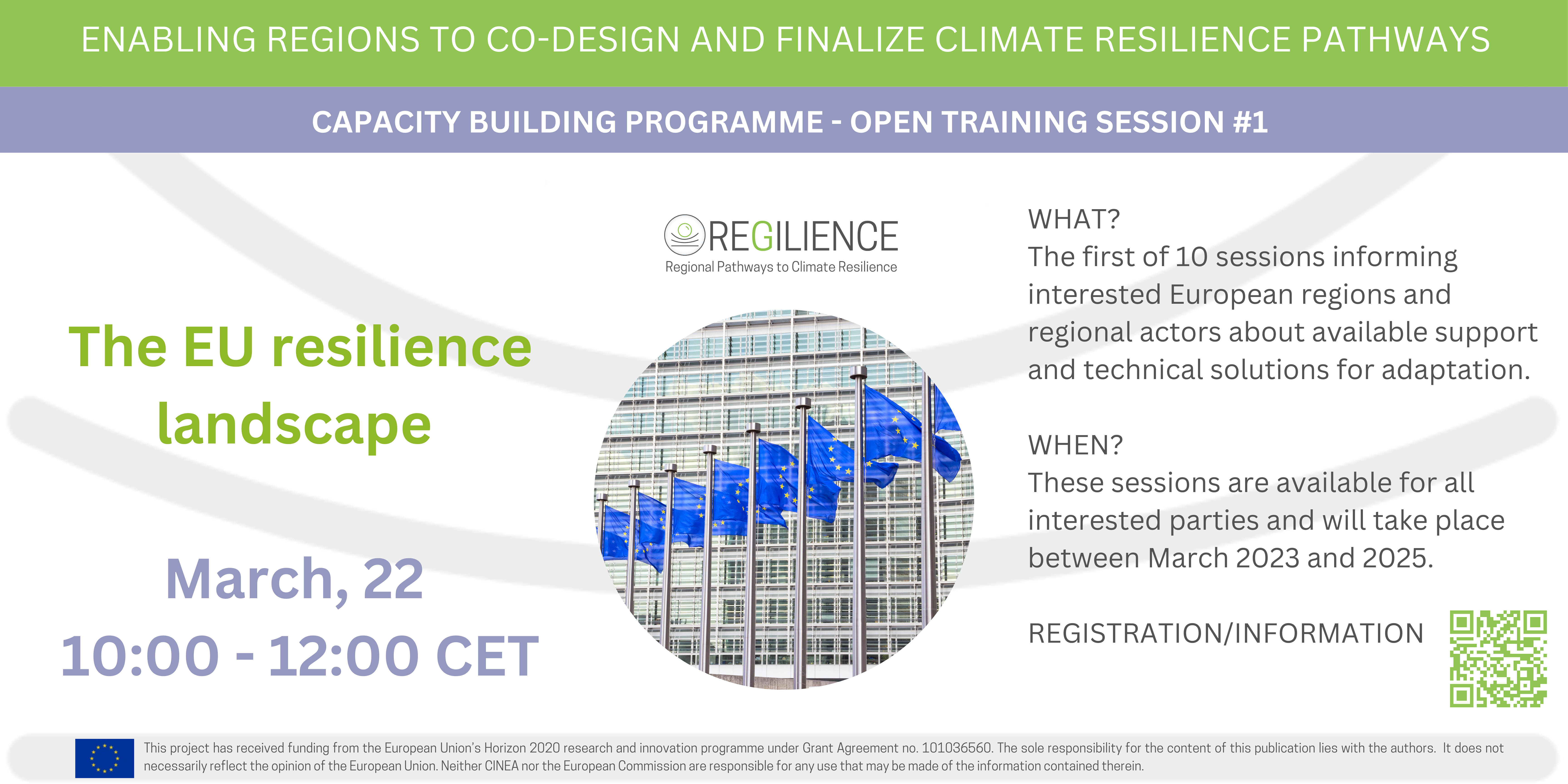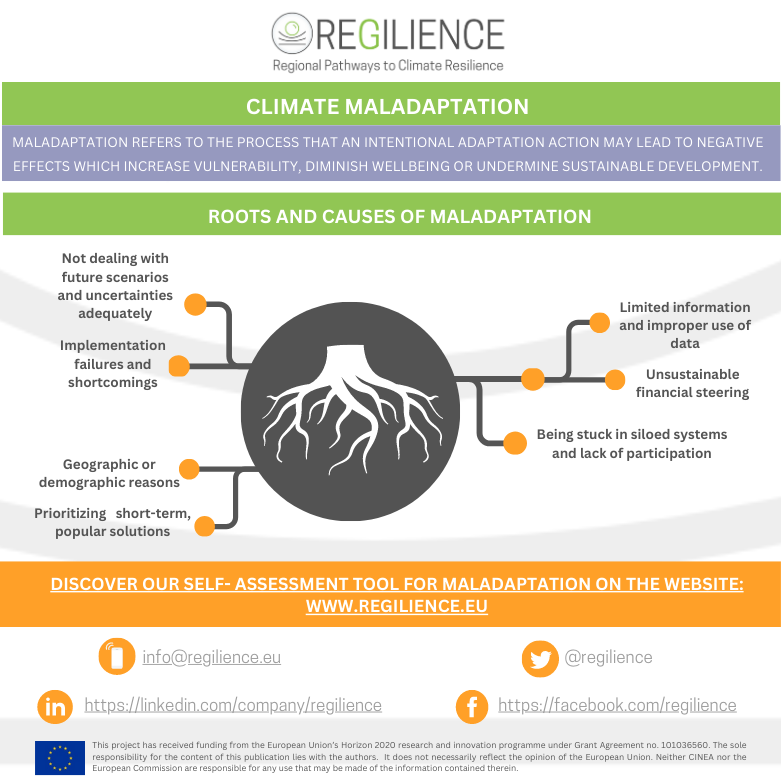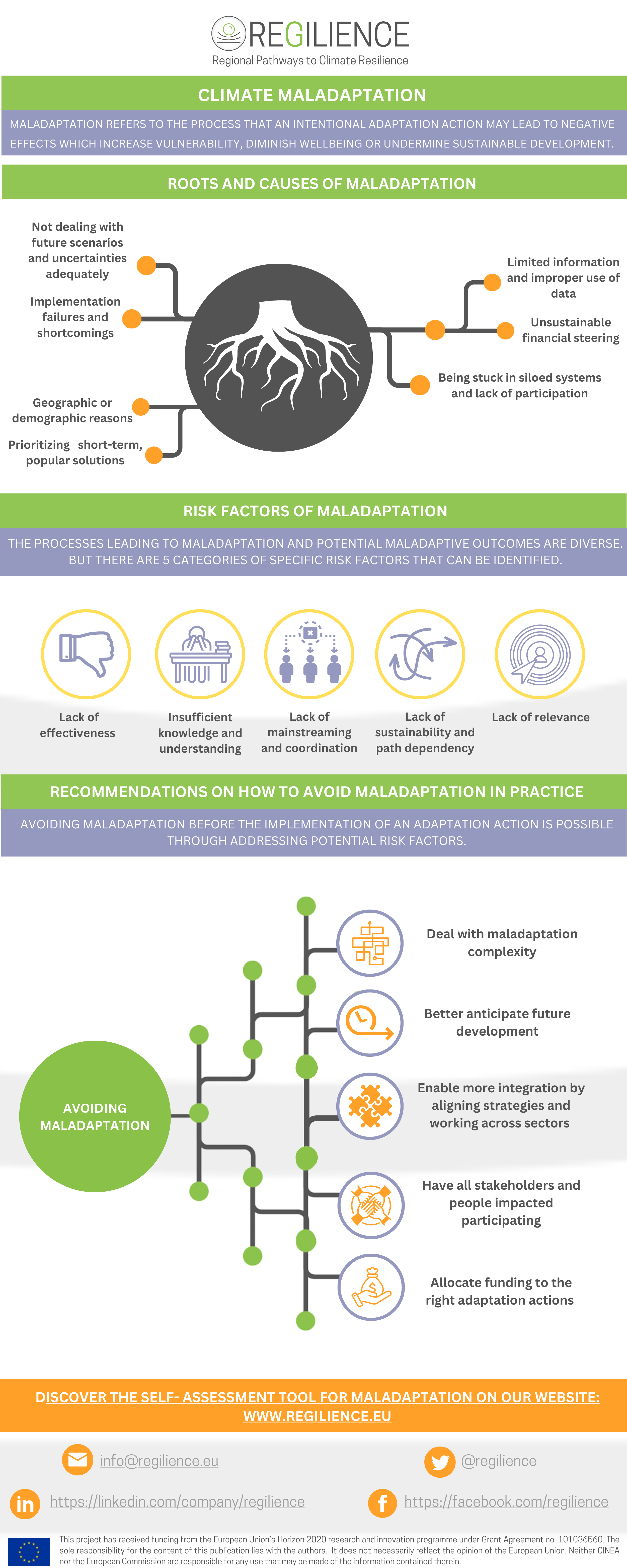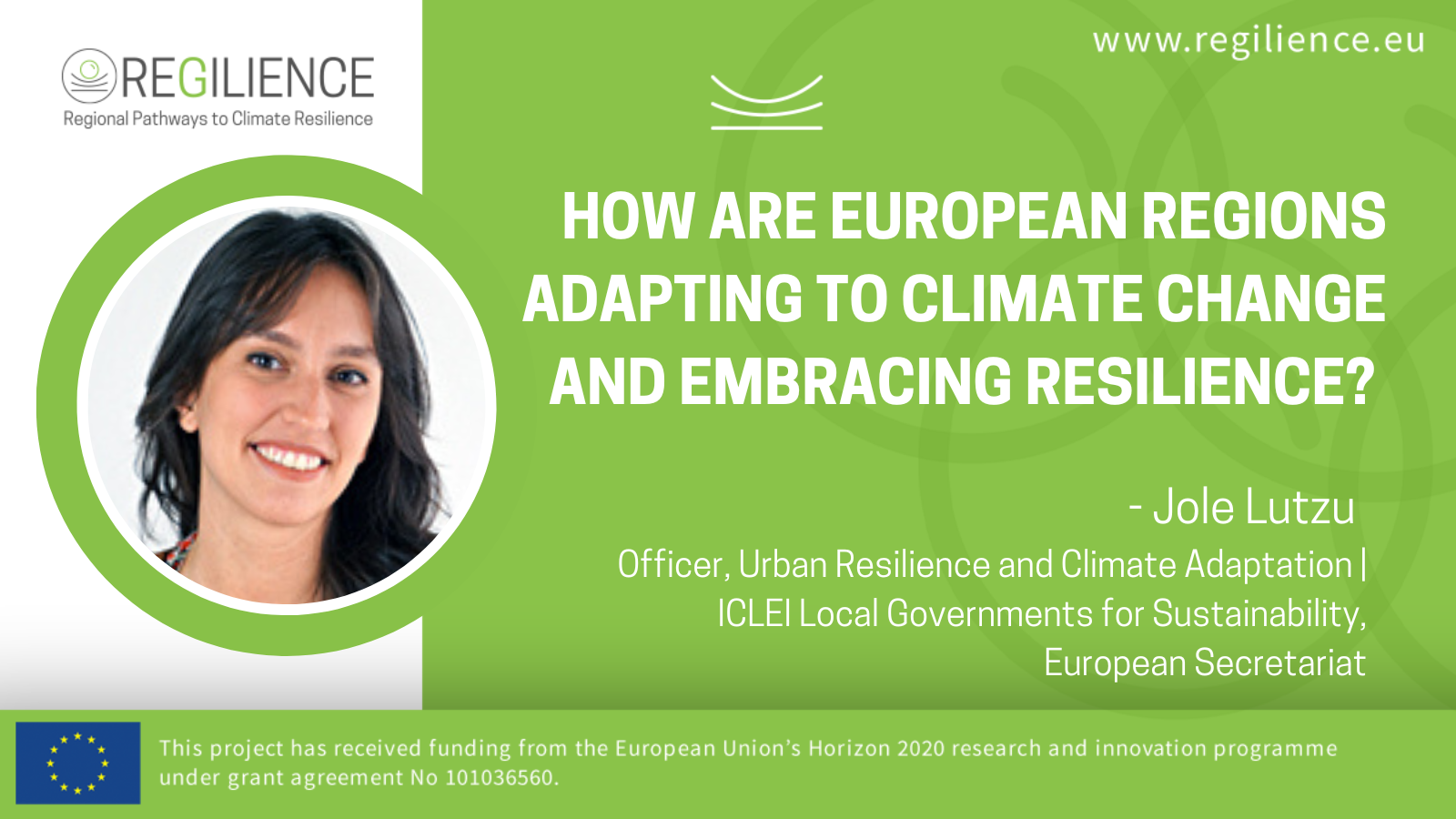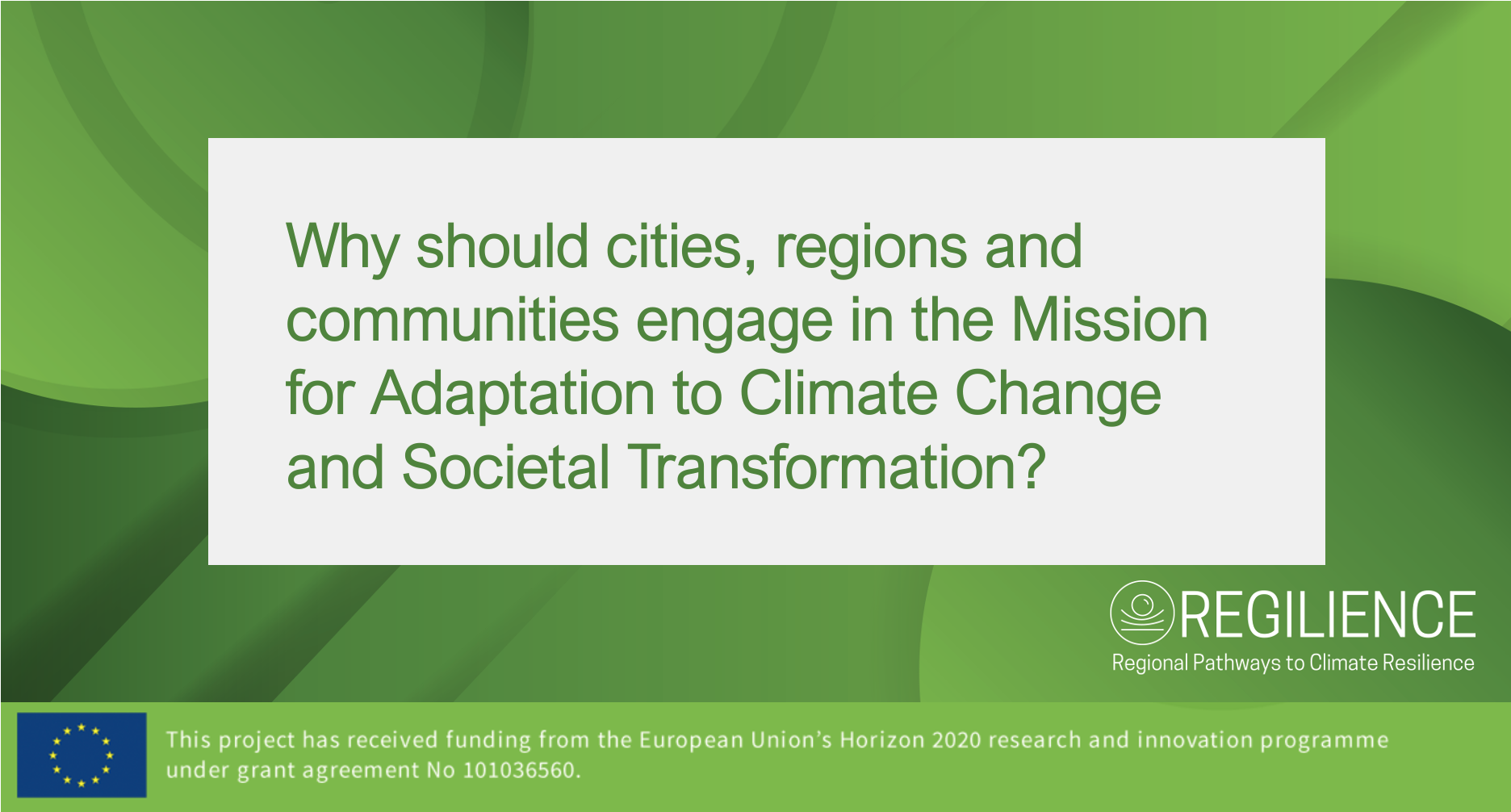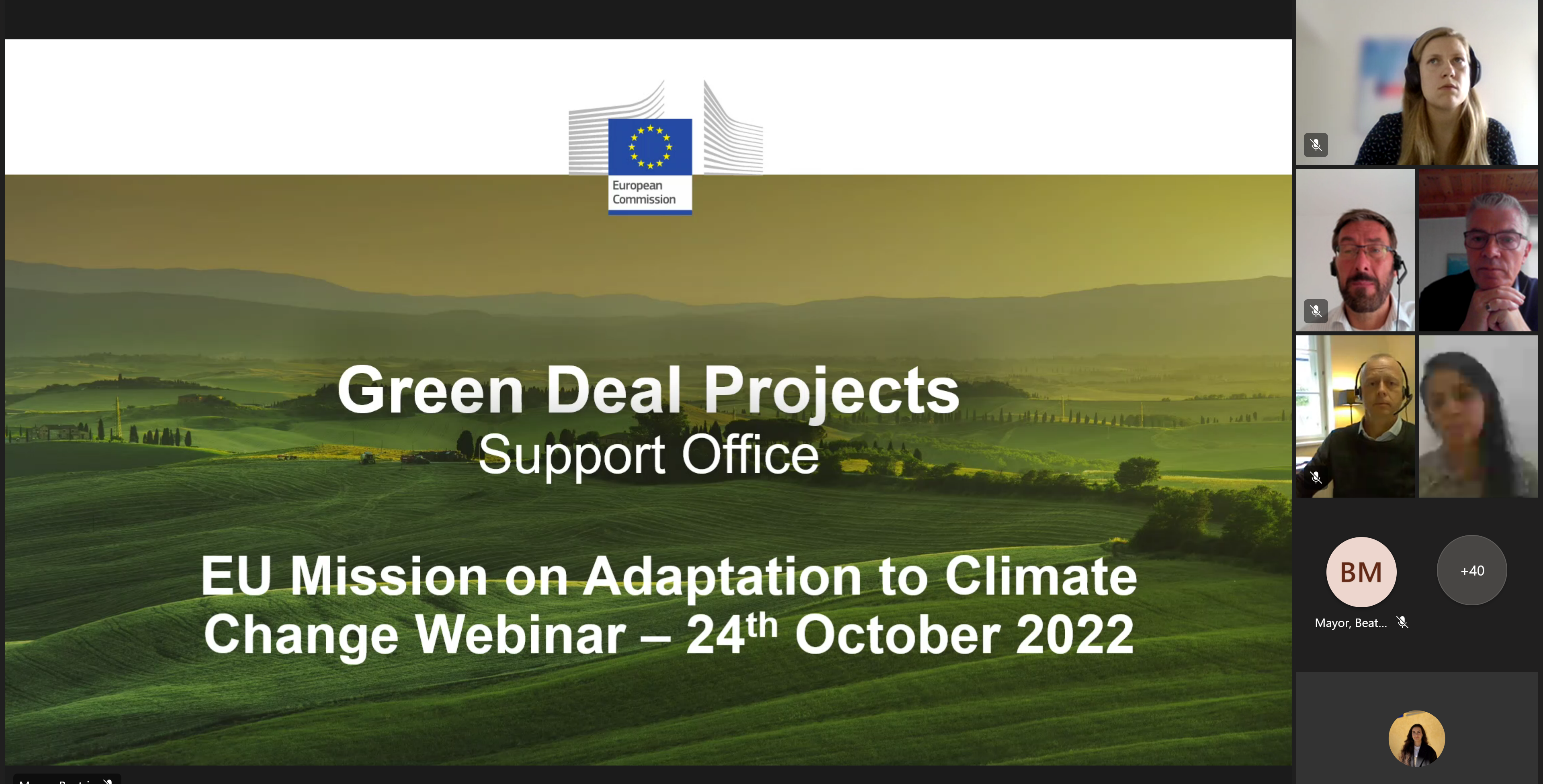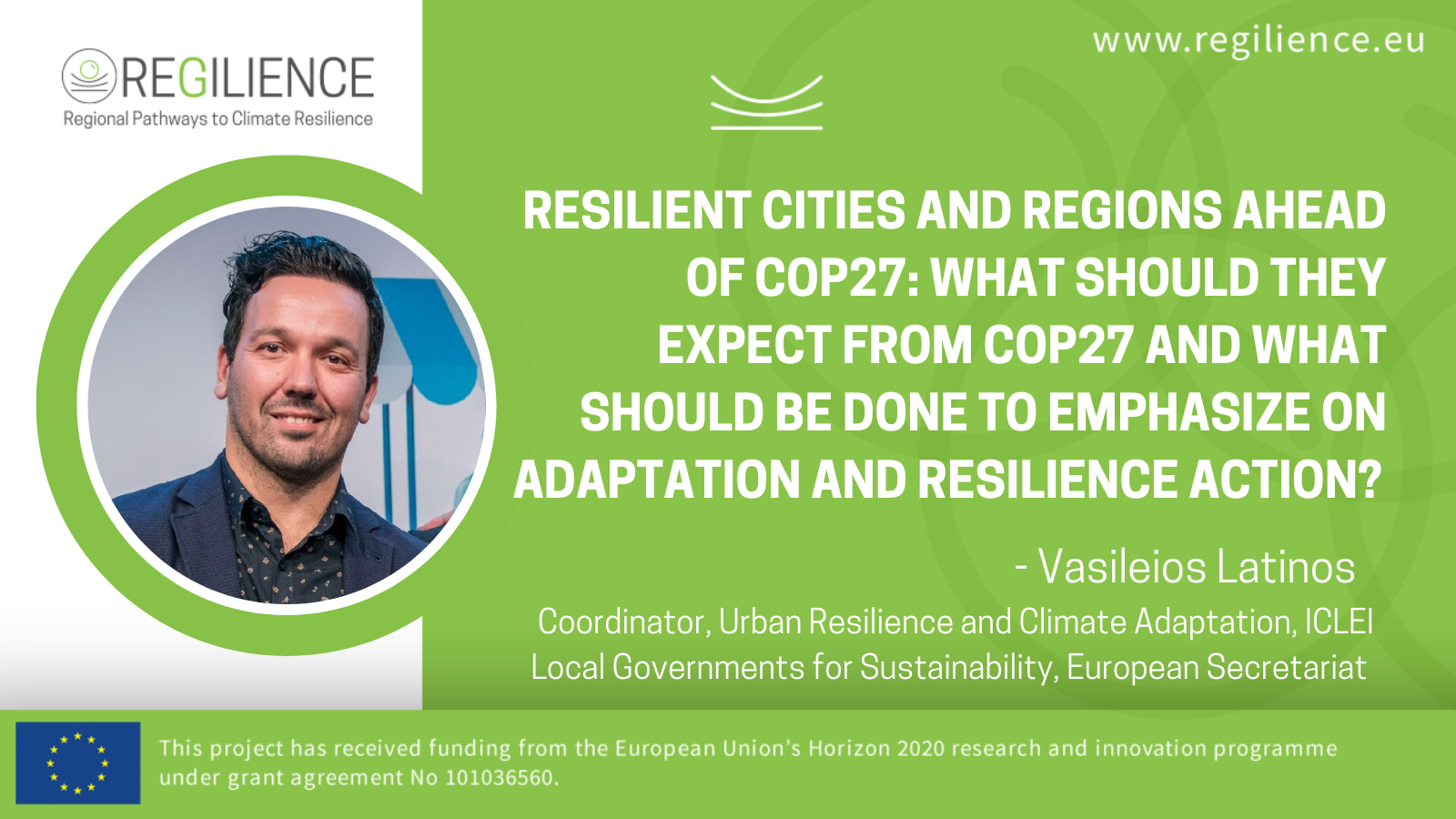The drive towards climate change resilience and adaptation across Europe took a step forward with the launch of a Community of Practice for regional authorities on 26 January. Representatives of the REGILIENCE, IMPETUS, ARSINOE and TransformAr projects joined hundreds of participants from around the continent to network and learn together.
Organised by the European Union’s Mission on Adaptation to Climate Change – known as ‘Mission Adaptation’ – the event was an opportunity to learn about the Mission, its charter, intentions for the Community of Practice, and the online resources that support this collaborative effort, such as a planned Mission implementation platform and Climate Adapt.
Participants were urged to become ambassadors of climate change adaptation, in the opening welcome by Mission Manager Clara de la Torre of the European Commission’s Directorate-General for Climate Action, DG CLIMA. The Mission’s objective is to support at least 150 European regions and communities towards climate resilience by 2030.
Around 300 regions and authorities are currently part of the Community of Practice. More than 200 of these are signatories to the Mission charter, representing 24 EU countries and other parties from countries associated or potentially associated with Horizon Europe, the EU’s research and innovation programme.
European survey
During the opening session, results were presented from a survey of European regions and local authorities. This showed that – while 76% of participating regions have a regional adaptation strategy, and significant numbers have dedicated budget, people or collaborations to support the work – the greatest barriers to deciding and implementing climate change adaptation measures remain finance and knowledge. On this basis, finance, access to data, and citizen engagement were selected as topics for interactive workshop segments for participants from projects, regional governance bodies, research organisations and European institutions to discuss together.
Projects participate
Thirteen representatives of the EU-funded climate projects REGILIENCE, IMPETUS, ARSINOE and TransformAr took part in the event. This was a great opportunity to meet newly-launched sister projects funded under Horizon Europe, and to explore opportunities for synergies with them and other meeting participants.
TransformAr was presented in a panel that showed examples of available tools for citizen engagement and how to organise it. These examples provided inspiration for the workshop discussion that followed. Likewise, examples from other projects and organisations were presented before the financing and data access discussions, including updates about the Copernicus Climate Change Service and the European Risk Data Hub. Regional, national and European funding opportunities were also explained.
In response to the wealth of information presented, the Community of Practice launch event also generated some feedback for Mission Adaptation. For Europe’s regional authorities to be able to build trust and pioneer climate change adaptation for their communities, they need support with translating materials and general awareness-raising around climate change impacts and the meaning of key terminology. And they need easy-to-apply guidance through the various tools, platforms and options, notably to support their decision-making processes.
These are areas where REGILIENCE, IMPETUS, ARSINOE and TransformAr are collaborating to maximise impact – for example, jointly listing their developing tools and solutions. All four projects are committed to playing their roles as part of the wider EU adaptation strategy The Community of Practice launch event marks a hopeful moment in the move towards these goals.
Further information
To stay up to date about the work of REGILIENCE, IMPETUS, ARSINOE and TransformAr and our role in the European climate adaptation community, please subscribe to our joint newsletter, or read previous editions of ‘The Climate Resilience Post’.
